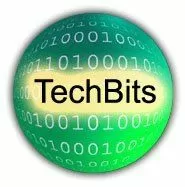TechBits: Helpful tips for T/Mon and NetGuardian Users
Q: Are T/Mon expansion cards hot-swappable?
A: No. T/Mon expansion cards are cold-swappable; they may only be safely removed or inserted when T/Mon is unpowered. Changing cards while T/Mon is powered can damage your system.
Q: How can I get the NetGuardian 832A G4 to send SNMP traps to my SNMP manager?
A:
- Log onto NGEdit and download the current profile from your NetGuardian
- Make sure all the alarms you want to send traps to have the "Trap" checkbox checked.
- Click on the SNMP tab and input IP address of your SNMP manager.
- Make sure Port is 162 and select the appropriate message format in the "format" field.
- Write any provisioning changes back to the NetGuardian.
- Reboot the NetGuardian. You may reboot using the front-panel buttons and LCD, the front-panel Craft port, or by removing and replacing the power connector(s).
Q: I have several analog alarm points that seem to float between normal and minor over/under pretty frequently. How do I stop these nuisance alarms? A: Within the NetGuardian, add an alarm qualifier for 1 minute on each analog alarm point so that the point has to be active for 1 minute before sending an alarm to your master.
Q: For T/Mon, which requires the most TCP connections - T/Windows or the Web-browser? A: Both the Web-browser and T/Windows use up the same number of TCP connections. The Web-browser is simpler to setup as there isn't any software to install. However, T/Windows has more functionality. The Web-browser does not allow you to view site stats or performance stats. We suggest using T/Windows for primary users and web browsers for people who only need occasional access.
Q: I am having trouble dialing into some NetGuardians on mountaintop sites. I am getting a connection, but also a lot of garbage characters. How can I connect cleanly? A: Add "+MS=B212" to the "dial" and "answer" init strings that NGEdit uses to dial into the NetGuardian (this is not to be confused with the init strings that the NetGuardian uses to dial out for alarm reporting, which are also configured in NGEdit). This forces the modem to "bell 212" mode and will fix many garbage character issues.
Q: My central office is reporting that its alarms are showing up with an undefined severity for the NetGuardian G4 reporting SNMP. How do I resolve this issue? A: Review the 'Alarms' tab in NGEdit. The 'Groups' column is used to assign alarm points to a "point group" numbered 1-8. By default, all alarms will be assigned to Group 1.
Next, review the 'Point Groups' tab in NGEdit. When SNMP traps are sent for alarm points in a group, the "when set" and "when clear" fields determine the severity descriptions that will be included (in the DPS RTUAState variable binding). Make sure that the fields for Group 1 are not blank, as they are the defaults for all alarm points. Enter the severity descriptions you wish to see.
You may customize your alarm reporting by assigning alarm points to other groups, then assigning severity descriptions to those other groups in the 'Point Groups' tab.
Q: Can I use a NetGuardianDX over a channel bank? A: Yes, you just need to use TX RX and GND and verify that the baud rates are setup at 2400. See the
NetGuardian DX user manual for pinouts.
Q: There is some trouble in communication between my NetGuardian and DX across a microwave overhead channel. How can I investigate this issue? A:
- Log onto the NetGuardian TTY interface, entering your password when prompted
- Connect via front craft port, OR
- Telnet to the NetGuardian's IP Address, Port 2002
- Press 'd' for Debug
- Press 'l' (lowercase "L",not the number one)
- Check the LED to confirm that the LED is showing activity
If you have a protocol analyzer, you should also see AA FA 01 XX XX XX on the transmit and AA FC 01 XX XX XX on the response if communication is occurring correctly between the base and the expansion.
Q: Why am I not seeing anything on the analog channels when hooking up a TempAlert sensor on a NetGuardian?
A: The TempAlert sensor (Winland Model TA-2HL) is a discrete sensor that closes a contact when your specified threshold is crossed. It uses only the base discrete alarms on the NetGuardian.
If you wish to monitor analog temperature and/or humidity values, a temperature-only analog sensor (Minco) and a temperature+humidity sensor (Vaisala) are available. Contact your DPS Sales representative for details.

